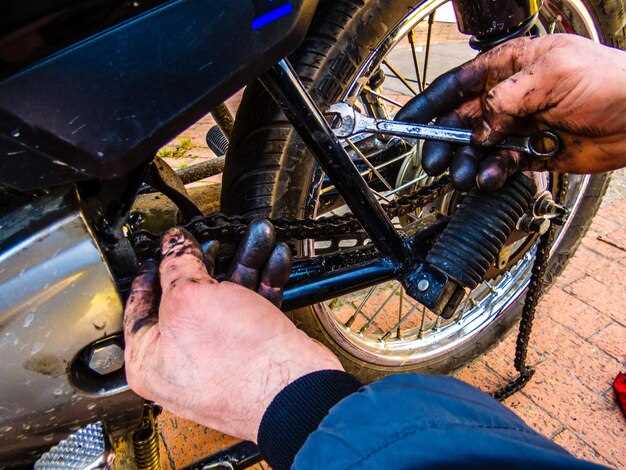
Maintaining the brake system of your ATV is crucial for ensuring both performance and safety. One of the most common maintenance tasks is bleeding the brake lines. This process removes air bubbles that can hinder brake effectiveness, providing you with a reliable stopping ability.
In this guide, we will walk you through the steps to successfully bleed your ATV’s brake lines. Properly performing this maintenance task not only enhances the braking system’s efficiency but also plays a vital role in keeping the rider safe. With the right tools and knowledge, you can complete this task quickly and efficiently.
By understanding the procedure and key safety measures involved in bleeding brakes, you can confidently tackle this essential ATV maintenance. Let’s ensure your ride is as safe as it is enjoyable by following our comprehensive guide.
Identifying Signs of Air in ATV Brake Lines

Ensuring the safety of your ATV is paramount, and proper brake performance is crucial for safe riding. One common issue that can arise is the presence of air in the brake lines, which can significantly affect braking efficiency. Being able to identify the signs of air in your ATV brake lines is essential for timely maintenance and safety.
Soft or Spongy Brake Feel: One of the primary indicators of air in the brake lines is a soft or spongy brake lever or pedal. When you press the brake, it should feel firm and responsive. If you notice that the lever sinks further than usual or feels mushy, this may indicate that air has entered the system.
Inconsistent Brake Performance: If your ATV experiences irregular braking response, such as decreased stopping power or sudden loss of braking ability, this could be a sign of air trapped in the brake lines. Consistent pressure should yield reliable stopping performance, so any fluctuations warrant further investigation.
Increased Travel Distance: When air is present in the brake lines, the distance the brake lever must travel before engaging the brakes can increase. If you find yourself needing to pull the lever further than normal to achieve braking power, inspect the lines for air contamination.
Visual Inspection: Conduct a visual inspection of your brake lines. Look for signs of moisture or fluid leaks, as these can allow air to enter the system. Bubbles in the brake fluid reservoir or during bleeding can also indicate the presence of air. Ensure that all connections are secure to prevent air from entering the lines.
Unusual Noises: Pay attention to any unusual sounds when applying the brakes. A hissing or bubbling noise can suggest that air is escaping or moving within the brake lines, signaling a potential air issue that needs addressing.
Regular maintenance of your ATV’s brake system is essential for safety. By recognizing these signs of air in the brake lines, you can take appropriate action to bleed your brakes and restore optimal performance, ensuring a safer riding experience.
Step-by-Step Process for Bleeding ATV Brake Lines

Bleeding your ATV brake lines is a crucial maintenance task that enhances safety and ensures optimal braking performance. Follow these steps carefully to achieve efficient results.
Step 1: Gather Necessary Tools and Materials
Before you begin, collect all required tools and materials. You will need a brake bleeding kit, a wrench, fresh brake fluid, and a container to catch the old fluid. Ensure that the brake fluid is suitable for your ATV model.
Step 2: Prepare the ATV
Park the ATV on a flat, stable surface. Turn off the engine and engage the parking brake. Review your owner’s manual for any model-specific instructions or precautions.
Step 3: Access the Brake Lines
Locate the brake master cylinder and the bleeder valve on each brake caliper. Remove any protective covers if necessary to access the components.
Step 4: Inspect Brake Fluid Level
Check the brake fluid reservoir to ensure it is at an adequate level. If it is low, add the appropriate type of brake fluid before proceeding.
Step 5: Begin Bleeding Process
Attach the brake bleeder kit to the bleeder valve on the caliper. Instruct an assistant to pump the brake lever several times and hold it down to create pressure.
Step 6: Open Bleeder Valve
While your assistant holds the brake lever down, use the wrench to carefully open the bleeder valve. Old brake fluid and air bubbles will escape into the container. Close the valve before your assistant releases the brake lever. Repeat this process until you see a steady stream of clear brake fluid without air bubbles.
Step 7: Check and Refill Brake Fluid
Throughout the process, keep an eye on the brake fluid reservoir level. If it drops too low, you risk introducing air into the system. Continuously refill as needed.
Step 8: Final Checks
Once all brake lines have been bled, ensure all bleeder valves are securely closed. Remove any tools and clean up any spilled brake fluid, as it can damage paints and surfaces.
Step 9: Test Brake Performance
Before taking your ATV for a ride, test the brake responsiveness. Apply the brakes firmly to confirm they engage properly without any spongy feel. If you notice any issues, repeat the bleeding process.
Safety Reminder: Always work in a well-ventilated area and wear protective gloves and eyewear. Brake fluid is corrosive; handle it with care.
Safety Precautions to Follow During Brake Bleeding
When it comes to bleeding brake lines on an ATV, ensuring safety is paramount. Proper precautions can prevent accidents and injuries while maintaining the integrity of the braking system. Here are essential safety measures to consider:
- Wear Protective Gear: Always wear safety goggles, gloves, and a mask to protect yourself from brake fluid and any debris.
- Work in a Well-Ventilated Area: Ensure the workspace is well-ventilated to avoid inhaling harmful fumes from brake fluid.
- Keep Brake Fluid Away from Skin: Brake fluid can be corrosive. Avoid skin contact and clean up any spills immediately.
- Use Proper Equipment: Ensure you have the correct tools and equipment needed for bleeding the brakes. Using the wrong tools can lead to accidents.
- Secure the ATV: Before starting the bleeding process, ensure the ATV is on a flat surface and securely supported to prevent rolling or tipping.
- Check for Leaks: Inspect the brake lines, calipers, and master cylinder for leaks before and after the bleeding process.
- Keep a Fire Extinguisher Nearby: Since brake fluid is flammable, keep a fire extinguisher within reach during the bleeding process.
- Follow Manufacturer Instructions: Always adhere to the ATV manufacturer’s guidelines for bleeding brake lines to ensure safe and effective procedures.
By following these safety precautions, you can efficiently bleed your ATV brake lines while minimizing the risk of accidents and ensuring reliable braking performance.





